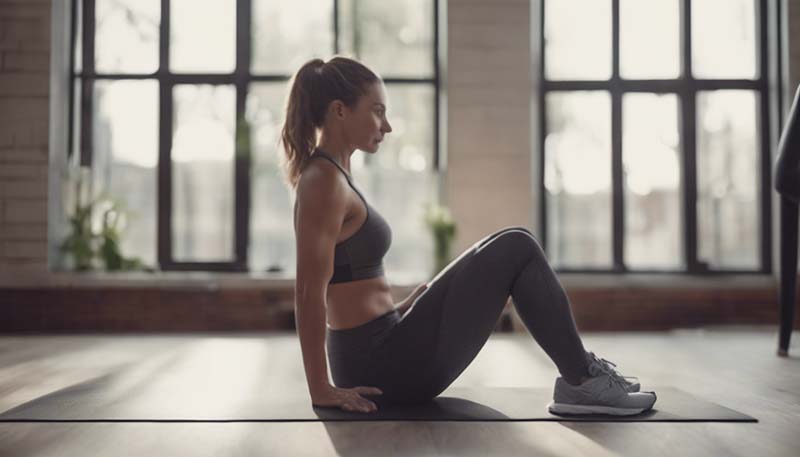How to Create a Fitness Plan for Improved Balance and Stability
Balance and stability are essential for overall health and well-being. They help prevent falls and injuries, improve posture, and enhance athletic performance. Creating a fitness plan focused on balance and stability can be a great addition to your workout routine. In this article, we will discuss the benefits of improving balance and stability, the key components of a balanced and stable body, and provide a step-by-step guide to creating a fitness plan tailored to your needs.
The Benefits of Improved Balance and Stability
Improving balance and stability can provide numerous benefits, including:
- Reduced risk of falls and injuries: Better balance can help prevent falls, especially in older adults.
- Improved posture: A stable core can lead to better posture, reducing the risk of back pain and other musculoskeletal issues.
- Enhanced athletic performance: Improved balance can enhance performance in sports that require agility, coordination, and body control.
- Increased confidence and independence: Better balance can lead to increased confidence in daily activities, allowing for greater independence.
The Key Components of a Balanced and Stable Body
A balanced and stable body requires a combination of strength, flexibility, and coordination. The key components include:
Advertisement
- Core strength: A strong core is essential for maintaining balance and stability.
- Lower body strength: Strong hips, thighs, and ankles contribute to overall stability.
- Upper body strength: Strong shoulders and arms can help with balance, especially during functional movements.
- Flexibility: Good flexibility in the hips, hamstrings, and calves can improve balance and stability.
- Coordination: Coordination between the upper and lower body is crucial for maintaining balance during dynamic movements.
- Proprioception: The ability to sense the position of your body in space is important for balance and stability.
Step-by-Step Guide to Creating a Fitness Plan for Improved Balance and Stability
Step 1: Assess Your Current Level of Balance and Stability
Before creating a fitness plan, it's important to assess your current level of balance and stability. You can do this by performing a few simple tests, such as:
- Single-leg stance: Stand on one leg for 30 seconds. If you struggle to maintain your balance, you may need to focus on improving your stability.
- Tandem walk: Walk in a straight line, placing the heel of one foot directly in front of the toes of the other foot. If you lose your balance, you may need to work on your proprioception.
Step 2: Set Realistic Goals
Setting realistic goals is crucial for success. Your goals should be specific, measurable, achievable, relevant, and time-bound (SMART). For example, a SMART goal for improving balance and stability could be:
- Specific: Improve single-leg balance.
- Measurable: Increase single-leg stance time from 30 seconds to 60 seconds.
- Achievable: With consistent practice, this goal is achievable for most people.
- Relevant: Improved single-leg balance can help with everyday activities and prevent falls.
- Time-bound: Achieve this goal in 3 months.
Step 3: Incorporate a Variety of Exercises
Your fitness plan should include a variety of exercises that target different aspects of balance and stability. Some examples include:
- Core exercises: Planks, bird dogs, and dead bugs can help strengthen your core.
- Lower body exercises: Squats, lunges, and step-ups can improve lower body strength and stability.
- Upper body exercises: Push-ups, pull-ups, and rows can help with upper body strength and balance.
- Flexibility exercises: Hamstring and calf stretches can improve flexibility, which is important for balance.
- Coordination exercises: Lateral shuffles, agility drills, and balance board exercises can improve coordination between the upper and lower body.
- Proprioception exercises: Single-leg balance exercises, such as standing on a foam pad or balance disc, can help improve proprioception.
Step 4: Progress Gradually
When creating your fitness plan, it's important to progress gradually to avoid injury and ensure long-term success. Start with easier exercises and gradually increase the difficulty as you become more comfortable. You can progress by:

- Increasing the duration: Start with shorter durations and gradually increase the time you spend on each exercise.
- Adding resistance: Use resistance bands, weights, or medicine balls to increase the challenge of your exercises.
- Increasing the complexity: Progress from basic exercises to more advanced movements, such as single-leg squats or balance board exercises.
Step 5: Monitor Your Progress and Make Adjustments
Regularly monitoring your progress is crucial for success. Keep track of your workouts and any improvements you notice in your balance and stability. If you're not seeing the results you want, consider making adjustments to your fitness plan. You may need to:
- Change the exercises: If you're not seeing progress with certain exercises, try different ones that target the same muscle groups.
- Increase the intensity: Gradually increase the intensity of your workouts by adding more resistance or increasing the duration of your exercises.
- Focus on form: Ensure you're performing each exercise with proper form to maximize the benefits and prevent injury.
Step 6: Stay Consistent and Patient
Improving balance and stability takes time and consistent effort. Stick to your fitness plan and be patient with your progress. Remember that even small improvements can have a significant impact on your overall health and well-being.
Conclusion
Creating a fitness plan for improved balance and stability can be a valuable addition to your workout routine. By following the steps outlined in this article, you can develop a personalized plan that meets your unique needs and goals. Remember to assess your current level of balance and stability, set realistic goals, incorporate a variety of exercises, progress gradually, monitor your progress, and stay consistent and patient. With dedication and hard work, you can improve your balance and stability and enjoy the many benefits that come with it.
Comment